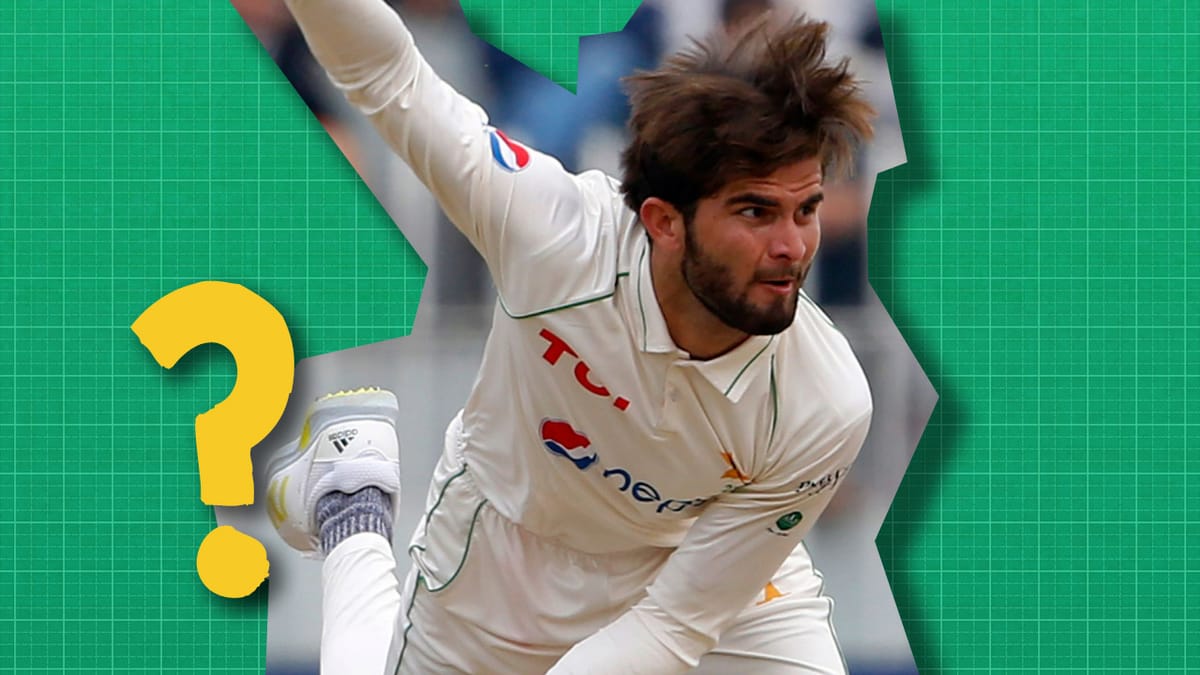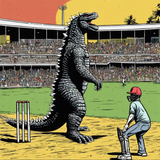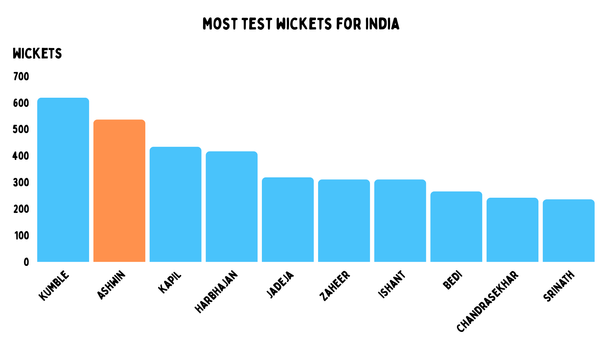Shaheen and Pakistan's disappearing wickets

Stats updated as of October 14, 2024.
Fazal Mahmood was a vibe. Look at him. Does it even matter that he was one of the best quicks of his era? He’s just a cool-looking guy. Holding a cigarette like he’s posing for a photo shoot. And while this was natural, he also was a model for Brylcreem.

This is a man who knew how to look, and how to bowl. In 1952, when Pakistan won their first Test, Fazal took 12 Indian wickets. This may have been their maiden win, but it was only their second Test. So if there is anything we know about Pakistan, they came out of the womb in Tests with a cool as hell legendary quick.
Fazal was patient zero of Pakistan fast bowlers. But of course it didn’t stop there.
They then added magical spinners. Abdul Qadir danced into the wicket one lick of the fingers at a time. Saqlain Mushtaq invented a whole new ball to finally make offies cool. And Saeed Ajmal tried as hard as anyone to disprove science in his career.
Pakistan bowling has had two constants throughout history: wickets and sexiness. Right now, they’re no more erotic than uncooked broccoli, and about as likely to take a wicket.
Something is seriously wrong here.
Back to the Brylcreem model, Fazal’s fast right arm featured in 34 Tests for Pakistan from 1952 to 1962, taking 139 wickets in 53 innings at less than 25 apiece. He took 65 of those wickets in seven Test wins at an otherworldly average of 10.69. He also has 2.62 wickets per innings. Only seven quicks in history take more.

That said, Pakistan had the third-worst bowling average amongst all Test playing nations in this period.

Despite Fazal’s heroics, only India and New Zealand had worse seam bowling averages than them, and the Kiwis were the only team whose spinners averaged more than Pakistan’s 44.34 runs per dismissal.


As far as strike rates are concerned, Pakistan were a middling team.
What all of this tells us is that even though the young nation had unearthed its first superstar bowler, he was kind of on his own. It was Fazal or bust.
The thing is, it doesn’t get fixed in the next generation. In 14 years after Fazal Mahmood’s last Test, the fast bowling average went up to 33 plus, nearly four runs more than before.

Surprisingly though, Pakistan had the second best spin bowling average in this phase, but their overall bowling mark was only better than India and New Zealand.


The strike rate remained mid-tier, as Pakistan managed to win three Tests out of thirty-four. All three of those wins came against New Zealand, who were the only team with a worse win loss ratio than Pakistan.

It starts to change with Sarfraz Nawaz, who with his burly moustache and luscious locks looked a little like a stylish criminal in a bad 1970s action film. But he was the first to bring reverse swing to Tests—though he later claimed his 7/1 spell wasn’t that. More importantly he taught it to a young Imran Khan, who lacked a moustache, but more than made up for it with his magnificent mop of hair.
From that moment, Pakistan’s fast bowlers were basically an old spice ad campaign on wheels. Sarfraz became a cult hero in Australia after taking 9 wickets in an innings in Melbourne. Imran broke stumps on the field and hearts off it, for the next two and a half decades. He WAS Pakistan cricket.
In Imran’s mould, two of Pakistan’s most prolific wicket takers in history were groomed. While the West Indies were aiming at everyone’s throats, Wasim and Waqar would destroy stumps with their toe-crushing, reverse-swinging yorkers.
From October 1976 till the start of the new millennium, Pakistan had the third-best bowling average, with their seamers only behind West Indies and South Africa on less friendly wickets at home than both.


When they did need spin, Abdul Qadir was the best of his generation. He was joined by Iqbal Qasim. Later, there was another partnership when the Mushtaqs—Saqlain and Ahmed—got together. A combined spin bowling average of 32 runs per wicket—the best in the world in that time.

Pakistan’s wicket taking prowess slowed down a bit in the 2000s. Wasim and Waqar retired soon after Y2K, and Saqlain disappeared into a doosra vortex. Of course, the likes of Shoaib Akhtar and Mohammad Asif managed to keep the spice alive, but in between their injuries and bans, there were huge chunks of mediocrity.
Then came the terror attack of the Sri Lankan team in 2009. In this pre-exile 2000s era, Pakistan’s bowling average was only better than the West Indies, Zimbabwe and Bangladesh.

The averages and strike rates for both quicks and tweakers were middling.


One major reason is that Pakistan was putting out some of the deadest wickets in the world, and it wasn’t like Pakistan ever had pitches as fun as their bowlers.
However, after the attack and during their home cricket exile, they were mostly in the UAE for home matches. Without Amir and Asif who were busy making number plates, this team was dragged together by Misbah-ul-Haq and went to number one in the world. It was only ever a brief, fleeting millisecond, but Pakistan were kings of the world.

Saeed Ajmal and Yasir Shah’s careers never overlapped, but both tweakers were at the forefront of all this success in exile. So Pakistan’s spin bowling average was behind only India in this period.

And while the fast bowlers swept the floor in this orphaned stretch, Pakistan’s overall Test bowling average was still fifth-best in the world. Taking 20 wickets in a game was not an issue, at least when Ajmal and Yasir were around. There was also a chapter in between where medium pacer Mohammad Abbas took 59 scalps across ten games.

Test cricket finally returned to Pakistan in December 2019, and for the next year or so, Pakistan adjusted just fine. They defeated Sri Lanka, Bangladesh and South Africa at home, but lost in both England and New Zealand.
The bowling averages weren’t flattering, but that was because Pakistan came back to Tests with wickets from the mid 2000s in mind. Still, Pakistan were able to bowl teams out at home without much difficulty, up until Australia toured in March 2022.



